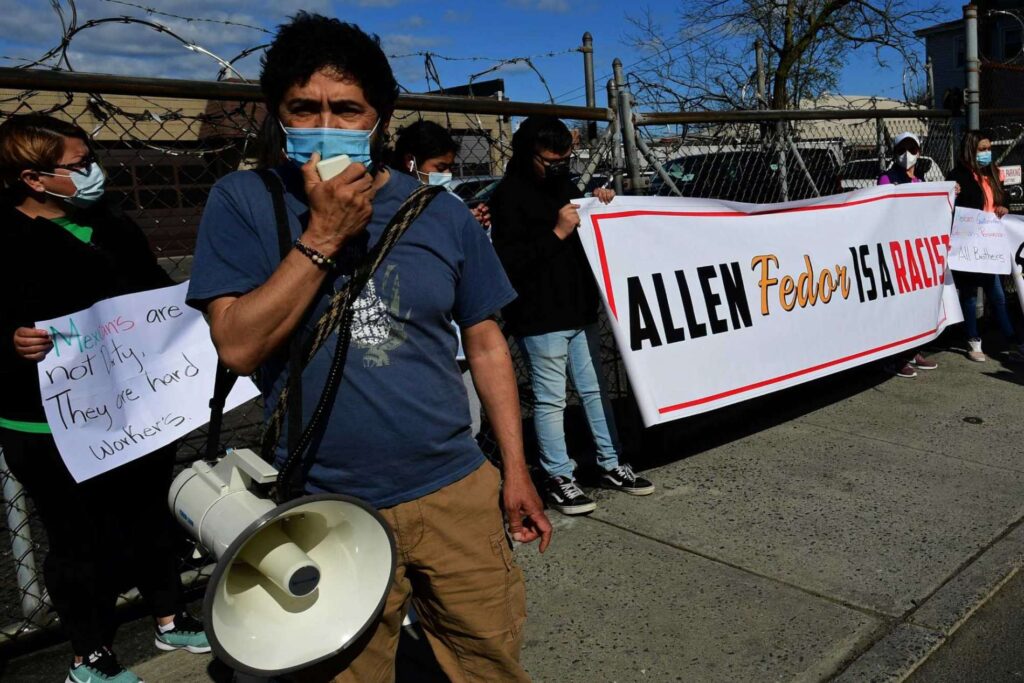
Photo courtesy of Hearst Connecticut Media
In March, when Ms. Laura Garcia, a 29-year-old resident of Norwalk, Connecticut, received a text message from her landlord, Mr. Allen Fedor, protests within Hispanic communities of Connecticut occurred across the state.
From November 2019 to March 2021, Ms. Garcia lived in a multi-family home owned by Mr. Fedor, a Norwalk landlord who also owns Fedor Auto Body Works. During Ms. Garcia’s negotiations for regaining her security deposit in advance of moving, Mr. Fedor informed Ms. Garcia via text message that he would not return the deposit because of wall damage in the apartment Ms. Garcia, who denies that she damaged the wall, replied to Mr. Fedor with a list of issues that she claimed he had not resolved in her time in the apartment, including a mouse infestation. When Mr. Fedor wrote back, he called Ms. Garcia a “dirty, Mexican illegal,” and allegedly threatened legal action against her.
Ms. Garcia, who was born in Guatemala and has been a United States citizen for seven years, saw this comment as a sign to seek help from the larger Hispanic community and denounce Mr. Fedor. On March 22, Ms. Garcia recounted these remarks and threats in Spanish to the activist organization of which she is a member, Unidad Latina en Acción (ULA), or “Latiné United in Action.”
ULA is a New Haven-based activist group that advocates for immigrants, workers, and Latiné community members across Connecticut. In response to the incident, ULA members organized protests on March 31 and April 6 in Norwalk, calling for a boycott of Fedor’s business and requesting for the involvement of the City of Norwalk in resolving the issue. At the April 6 demonstration, the leader of ULA, Mr. John Jairo Lugo, invited the mayor of Norwalk, Mr. Henry Rilling, to take up Ms. Garcia’s cause.
As the second protest continued, another allegation against Fedor surfaced, this time from a man who identified himself only as Abel — for fear, as he said, of persecution by immigration control — claiming that Mr. Fedor refused to pay him for his gardening work. In his testimony at the rally, Abel said that he had worked for Mr. Fedor for ten years, but was paid in checks that Mr. Fedor had voided, preventing Abel from being paid. Abel claimed that when he approached Mr. Fedor about this, Mr. Fedor stated that Abel would never be paid for his work and that if he continued to question this choice, Immigration and Customs Enforcement (ICE) would be called.
Abel was accompanied by about two dozen members of ULA and other activist groups at the April 6 protest. Ms. Garcia stated that numerous other immigrants and people of color had suffered wage theft and work abuse under Mr. Fedor, and that she was glad to hear Abel’s testimony. “I spoke up because when I spoke, others were willing to share their stories,” she said.
In an interview with Connecticut Hearst Media, Mr. Fedor apologized for his comments and explained his feelings about the backlash to his texts to Ms. Garcia, “I kind of feel discriminated against because I happen to be white and a landlord.” Mr. Fedor has not commented on Abel’s accusations of wage theft.
Following discussions with ULA and both protests against Mr. Fedor, Ms. Garcia decided to file a complaint with Norwalk’s Fair Housing Advisory Commission, threatening legal action against Mr. Fedor should he refuse to return her security deposit. Mr. Fedor agreed to pay back the money within thirty days. ULA has not decided to lighten its pressure. In addition to continuing to protest, the group is in the process of establishing a Norwalk branch.
What began as a protest against a single landlord has grown into a movement to highlight the larger challenges faced by immigrants. In a speech at the April 6 protest, Garcia said that, in regard to the landlord’s remarks against her, “I don’t think we need that in Norwalk. We need unity, love, and peace.”




